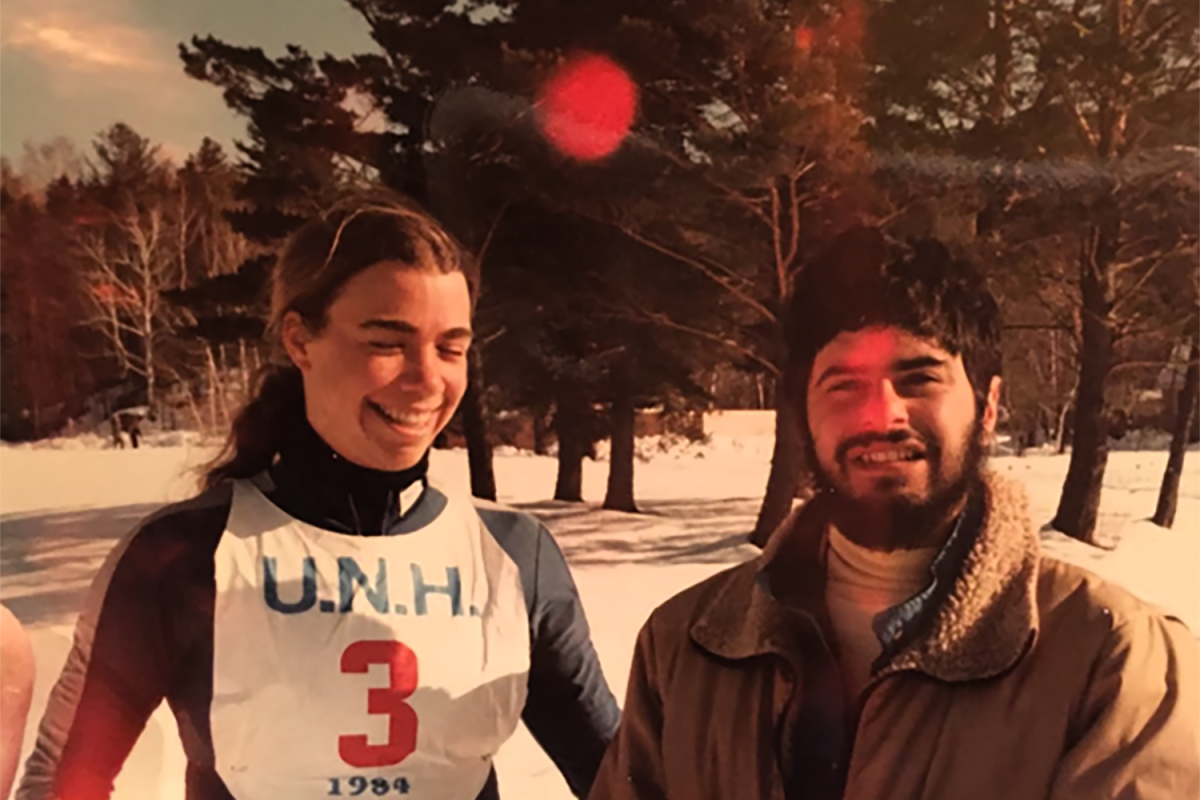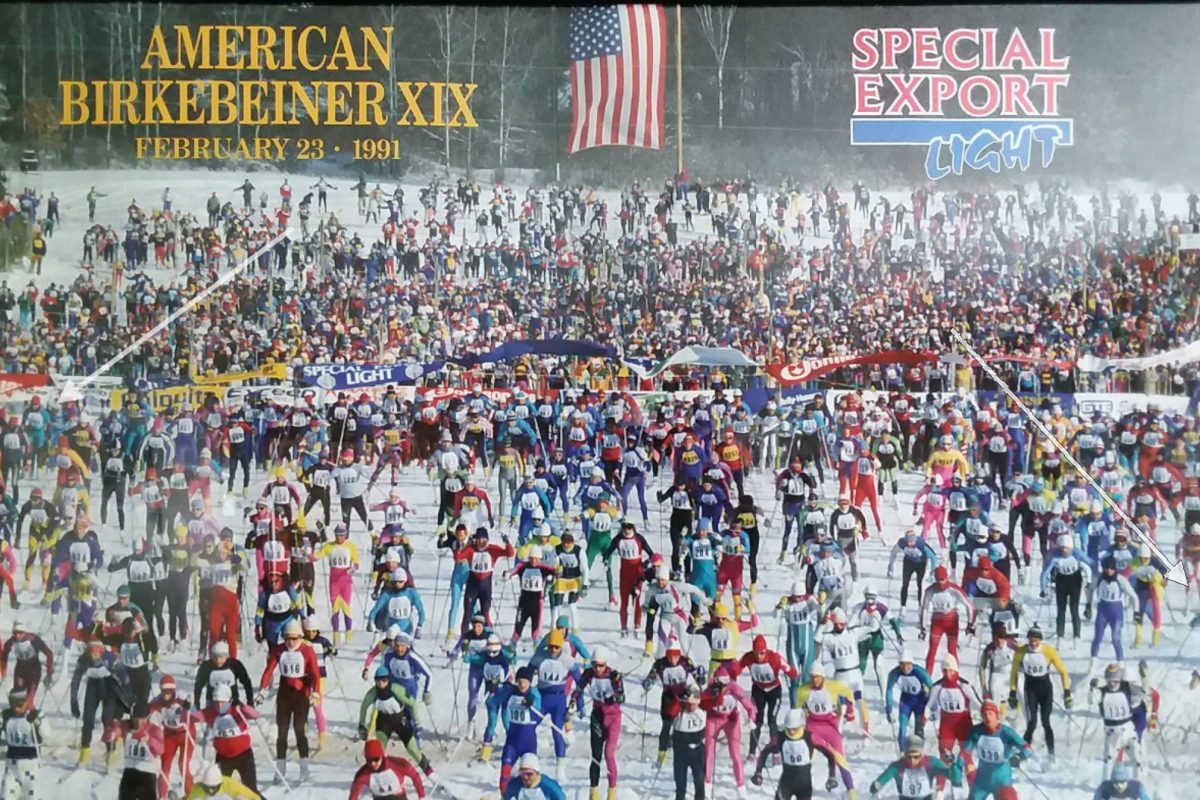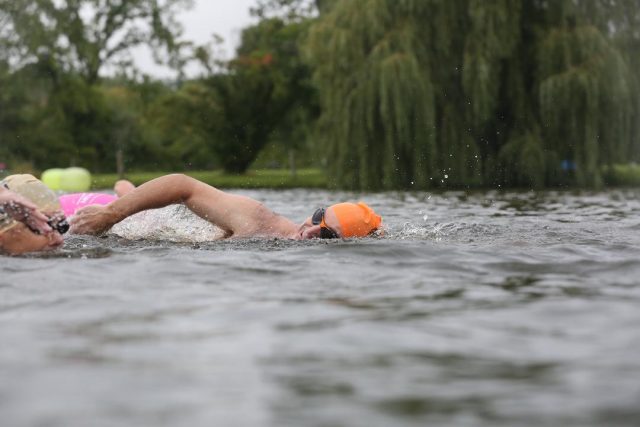
A guy I knew once told me, “Everyone’s got something.” He was referring to the inevitable injury, illness, or other malady that eventually affects everyone. Push your body long and hard enough, and eventually something will break down. The point he was making was that it doesn’t really matter what the something is: eventually, you just have to deal with it. His bigger point was that it’s not a good mindset to think first of your limitations, or compare yourself to others, or your former self, but instead to focus on what you can do. It was terse advice, which at the time I didn’t fully appreciate; now, I think I finally get his meaning.
When I began writing this article, I wasn’t certain how much personal backstory I was ready to share. Very few people even know that I’ve been dealing with a “something” for over seven years now. But I wanted this to be more than an article about just another race and, instead, talk a little about why we race. Everyone who races has different reasons and motivations, but considering the time and effort that goes into preparation, isn’t the motivation—the why— worth a little introspective examination?
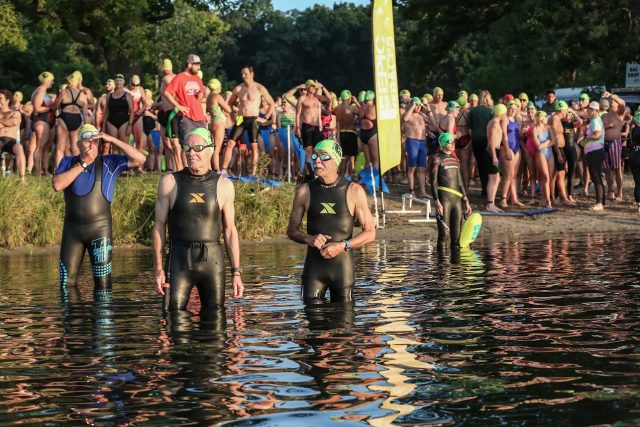
When it comes to racing, there may be as many motivations as there are racers. In general, I’m guessing that most of us fall into the category that I used to fall into: racing constitutes a meditation, a focus, an almost-sacred space where we test ourselves and investigate our limits—and that’s a more-than-sufficient reason to pin on a number and toe a starting line. Myself, I’ve been ski racing since the mid-1980s. To be clear, I was never an elite skier, not even a local standout. I was what most of us are: a passionate citizen racer who puts every ounce of energy into every race. If I finished in the top quarter of my age group, I was happy.
Seven years ago, I completed my fifth Noquemenon 50k marathon, one of several marathons I did that winter. That particular Noquemenon was only one race in a season of races, which was one only season in decades of citizen cross-country ski racing. But six weeks after the Noquemenon, I was lying flat on my back, unable to walk around my block; and I have a small block. This “something” of mine that appeared after Noquemenon would not go away: it turned about to be worse than what some people might get and not as bad as others. As I’d heard, everybody’s got something. This “something” was mine.
Fast forward five years: after years of struggle and a roller coaster of issues, I decided that I had worked my way back to the point where I could dip my toe back into the athletic waters…literally. Focusing on what I could do meant that I would concentrate on swimming. It was one activity I could do without too many side effects. So, I decided to enter a swimming race.
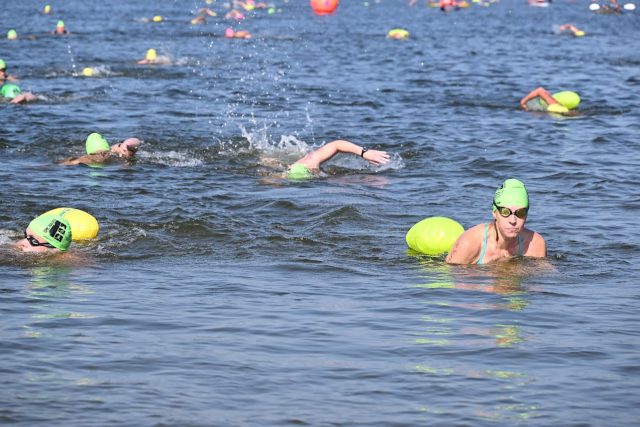
The event was the 2021 Swim to the Moon half mile race. It’s the shortest distance which EPIC Races’ swim event series offers ( the longest being 10K). The series is held annually outside of Hell, Michigan. Yes, that’s a real place and appropriately named as there are a variety of extremely challenging races held in the area. As it turns out, Hell is actually very picturesque with a series of long connected lakes, perfect for a marathon swim.
I was pretty certain that I had worked myself back to the position to be able to open water swim a half mile. At the time, it was a very big deal for me, physically. A big enough deal that when I finished, it brought my wife to tears and even elevated my normally low emotional metabolism. But still, my finish was marred by the self-inflicted psychological wound of comparing myself to what I used to be. For the former me, a half mile swim was nothing.
Last summer I continued to improve my physical condition to the point where I decided to take on the challenge of the 3.1 mile swim at the same event in 2022. I chose the 3.1 mile distance because completing it would force me to stretch. I didn’t know if I could complete it; DNF was a real possibility, but the distance seemed achievable. I put the odds of finishing at a little better than 50/50. The most important thing about my choice was that it was farther than I had ever swum in the open water, even before my “something” had occurred. If I could complete this goal, it would help move me beyond looking back at what used to be.
Suspended in the balance between hoping to complete the event and falling short, the catalyst to try was created. If I could finish the race, it would prove that I had reached some sort of agreement with my “something”—it didn’t completely control me, but I also recognized its permanent presence in my life. Like an unwelcome houseguest who refuses to leave, you have to learn to live with it. But, I would be focusing on what I could do, and achieving something I had never done before.

I was able to complete the event in reasonable fashion—not just survival mode—and put in a respectable time of 2:08. A vast array of emotions ensued, including a new investigation of the question “Why do I race?” Prior to the unwelcome arrival of my permanent houseguest, I was never really certain why I raced. I really enjoyed racing and after doing it for over 30 years it had become a sort of nondenominational religion for me. I was a true believer and devoted congregate at this house of worship, but I wasn’t really sure why. I only knew that I really believed. I enjoyed it, I committed myself completely, I did the best I could; and repeat every year.
In the five year interregnum between my last ski race and my first swim race, I had a lot of time to think about why I wanted to race. My personal motivation for this last race was to focus on doing what I can do and try to reset my psychological baseline. Another part of the process was that maybe if I swim enough miles, I’ll be able to do a ski race again, maybe even return to another marathon. But, that’s another goal, for another day, and one I’m not certain I’ll ever be able to do again. At least for now, the reasons were more concrete, articulable and, perhaps, more substantial.
After completing last year’s swim, I knew that I could physically perform the task of swimming 3.1 miles. So, this year I set a goal beyond merely finishing. If I could swim the 3.1 mile distance in under two hours, then my “something” would be the one pushed back onto its heels. It would still be an unwelcome guest, but then it would be relegated to rumbling around in the attic instead of being in the room next to me constantly banging on the wall making noise.
I understand that setting a goal of finishing an event in a particular time may not be the greatest strategy. Instead, one should focus on the process; control what you can, and then whatever results will follow will be all right. Sound familiar? Nonetheless, I set sub-two hours as my goal. It seemed like it would be such a concrete achievement—such a tangible task, that if I could do it, it would be exceedingly satisfying—and make a statement to myself.
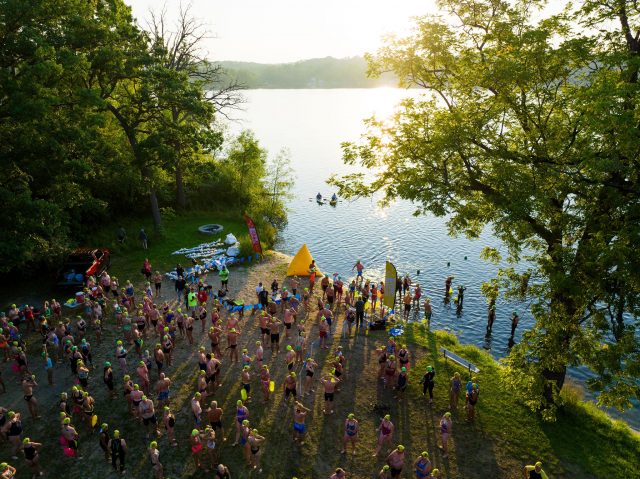
So, on August 20th, I set out to Half Moon Lake at 4:00 a.m. with my wife, who was also competing, and dragged along my unwanted houseguest. It was a beautiful warm morning at Half Moon Beach and the water was calm. But waking up at 3:30 a.m. is enough to put most people in a slightly sour mood, so there was that.
Swim racing long distances is only somewhat translatable to marathon ski racing. Many of the challenges with ski racing simply don’t exist in the water. You generally don’t have to worry about overheating (I was in the non-wetsuit division), and without the force of gravity tugging at you the type of fatigue is quite different. Another major difference is taking on nutrition. You can forget about fueling every 20-25 minutes, it simply isn’t feasible. Also, as it turns out, it isn’t really necessary, at least for me and the people I’ve raced with.

The swim course navigates three different lakes, a canal, and one culvert. Each has its own temperature, currents, and choppiness. I felt reasonably good throughout, and when I reached the two mile mark, I felt like my goal was in reach. I never stopped to check my watch, I just set a pace I could maintain and kept with it. With about ½ mile to go, I began to cramp and my pace slowed. This is also the point where swimmers reconnect with racers doing the shorter distances and the traffic increases. It’s not a great spot to be fatigued.

With the finishing beach in sight, I pushed as hard as was prudent and finally got to the shoreline where you could walk. Or, more accurately, try to walk. As soon as I stood, my legs wobbled and gave out. It took a couple of seconds to regain my sense of dealing with gravity and balance. I pulled myself across the finish line and checked my watch… 2:02. Well S—t. Close, but goal not achieved—or was it? The disappointment only lasted briefly as I remembered lessons learned over the last seven years. No, I didn’t achieve my performance goal. But, I was competing again. I had achieved the goal of getting back in the game—perhaps not in the way my former self would, but in the best way my new self could. That’s what mattered. The elusive two hour barrier is still out there—beckoning me to crack it—and that’s a goal I think I can still achieve.
There are many lessons I’ve learned through my journey with my particular “something,” but among them is that the “why” really does matter. It matters to be able to articulate it, understand it, and use it to help move you forward. So now that I know my why, my particular something spends more of the time in the attic where it belongs. Hopefully you can figure out your “why” and—armed with that knowledge—help move yourself forward.
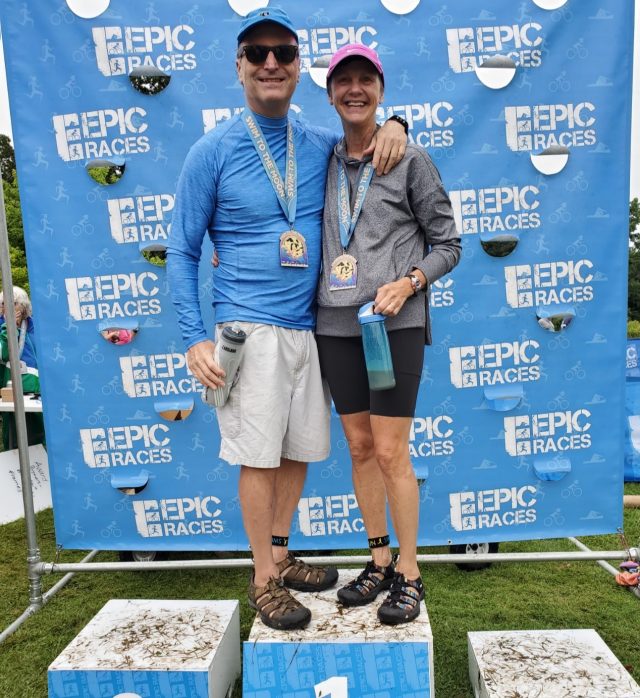
Many thanks to Eva Solomon and the people at EPIC races for their support.

